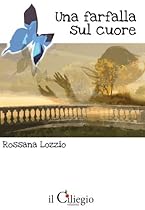

Learn Revit Architecture with expert instruction from this Autodesk Official Press guide The new edition of this bestselling Revit book is the most useful and approachable Mastering Revit Architecture yet. Thoroughly revised and updated; this comprehensive guide to Autodesks industry-leading building information modeling (BIM) software features in-depth explanations; real-world examples; and practical tutorials help you grasp crucial tools; techniques; and concepts so you can quickly start doing real work in Revit. You will learn core BIM concepts and best practices for everything from putting together impressive building designs to producing solid documentation; creating visualizations that impress clients; and more. Hands-on exercises with downloadable before-and-after files provide plenty of opportunities to practice the real-world scenarios and hone all the crucial Revit skills. Explains the user interface; general concepts; best practices; and new features of Revit 2014 Teaches modeling; massing; and visualization with Revit Helps users develop extended modeling skills for walls; stairs; floors; and more Features detailed documentation and presentation techniques Provides detailed instruction; step-by-step tutorials; and numerous examples Includes downloadable starting and ending files and additional advanced content Offers information to help readers prepare for Autodesks certification exams This detailed reference and tutorial is the perfect resource for becoming an expert with Autodesks powerful BIM software.
2013-05-15 2013-05-15File Name: B00CTX2NJC
Review
14 of 17 people found the following review helpful. Post-Modern Theory at its Most Half-bakedBy Jason P. GubbelsAs fun as pop culture theory can be; too often it merely signifies what those suspicious of academia suspect lurks in every college campus across America. Its an unfair assessment; of course - anti-intellectualism is just as boorish as intellectualism - and yet; when one reads a book like this; its difficult not to sympathize with the critics.A collection of fourteen essays concerning the 1970s; this book; compiled by Shelton Waldrep; attempts to investigate just how the 1970s affected popular culture (American popular culture; of course; although thats not explicitly stated). This sounds interesting; but the theorists sampled in the book are writing from a viewpoint which suffers multiple drawbacks - the lowbrown-driven highbrow.Its all good fun to pose theories of retro-chic and falsely-constructed nostalgia using the movie "Waynes World" as a primary source (as Stephen Rachman does); but to what greater end? Its amusing to read how Cindy Patton compares J.L. Austins critical analysis of words and language to "The Opening of Misty Beethoven;" a porno flick; but why bother?While articles such as Sonhya Sayres exploration of the Jonestown massacre and Van Cagles look at glitter and The New York Dolls are at least well-written and intelligently posed; the majority of this book is insulting to both the intelligence of highbrows and the concerns of the so-called "lowbrows" that this popular culture is supposedly aimed at. By deconstructing bellbottom fashions; say; or blaxploitation flicks; we come no closer to the "meaning" of popular culture or the forces that drive it; but merely drive a wedge between the intended audience and the apparent intellectuals who desperately need "lowbrow trash" in order to justify their upcoming journalistic essaysOnly Greil Marcuss closing essay; concerning the death of 60s idealism as embodied in Bob Dylans "Self Portrait;" remains true to either the spirit of intelligent criticism or the joy of popular culture. Read this for a laugh; or to shake your head at the sorry state of academia. Otherwise; dont clutter your mind with this stab at faux-elitism.